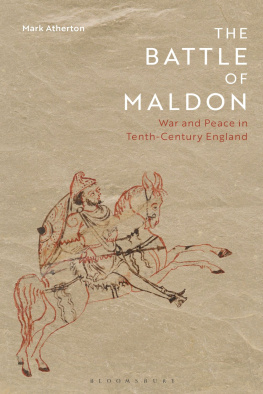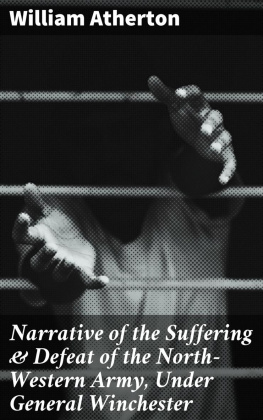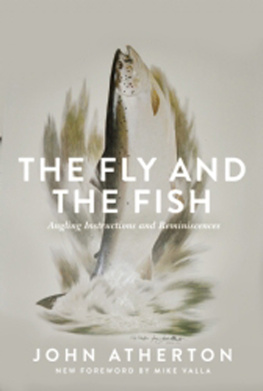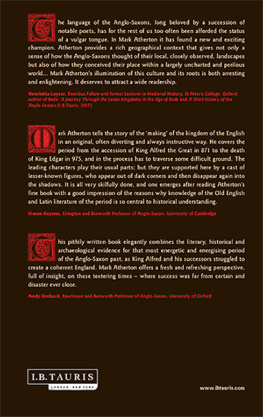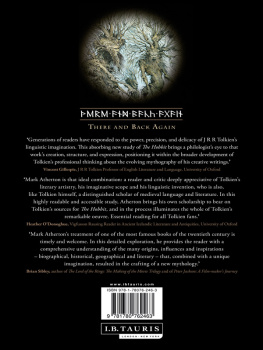Mark Atherton - The Battle of Maldon
Here you can read online Mark Atherton - The Battle of Maldon full text of the book (entire story) in english for free. Download pdf and epub, get meaning, cover and reviews about this ebook. publisher: Bloomsbury UK, genre: Art. Description of the work, (preface) as well as reviews are available. Best literature library LitArk.com created for fans of good reading and offers a wide selection of genres:
Romance novel
Science fiction
Adventure
Detective
Science
History
Home and family
Prose
Art
Politics
Computer
Non-fiction
Religion
Business
Children
Humor
Choose a favorite category and find really read worthwhile books. Enjoy immersion in the world of imagination, feel the emotions of the characters or learn something new for yourself, make an fascinating discovery.
- Book:The Battle of Maldon
- Author:
- Publisher:Bloomsbury UK
- Genre:
- Rating:5 / 5
- Favourites:Add to favourites
- Your mark:
- 100
- 1
- 2
- 3
- 4
- 5
The Battle of Maldon: summary, description and annotation
We offer to read an annotation, description, summary or preface (depends on what the author of the book "The Battle of Maldon" wrote himself). If you haven't found the necessary information about the book — write in the comments, we will try to find it.
The Battle of Maldon — read online for free the complete book (whole text) full work
Below is the text of the book, divided by pages. System saving the place of the last page read, allows you to conveniently read the book "The Battle of Maldon" online for free, without having to search again every time where you left off. Put a bookmark, and you can go to the page where you finished reading at any time.
Font size:
Interval:
Bookmark:

The Battle of Maldon
For my mother Brenda Atherton (19342007) and my father Nigel Atherton (19312020)
The Battle of Maldon
War and Peace in Tenth-Century England
Mark Atherton

Contents
The following friends and colleagues have read chapters or sections of this book and/or offered advice and suggestions, which have all been very gratefully received: Helen Appleton, Hannah Bailey, Stephen Baxter, Rachel Burns, Julie Dyson, Rob Ellis, Mark Griffith, Peter Grybauskas, Tony Harris, Susannah Jayes, Kazutomo Karasawa, Simon Keynes, Eric Lacey, Alex Larman, Stuart Lee, Francis Leneghan, Richard North, Andy Orchard, Rafael Pascual, Eleni Ponirakis, Lynn Robson, Lucinda Rumsey, Daniel Thomas, Julian Thompson, Erik Tonning , George Wright. All errors are mine and not theirs. Julie gave the closest support, and a camera, and she even purchased a car, which was invaluable for field work: we are grateful for hospitality from our friends Trace and Diane Horsman, and Simon and Julie Watson, who gave us board and lodging as we travelled the breadth and depth of East Anglia and Essex.
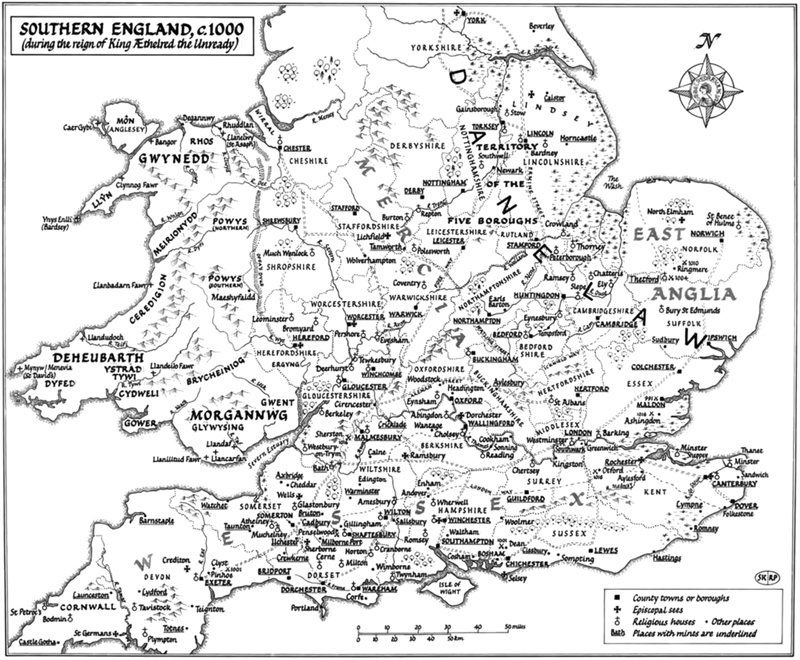
Map of tenth-century England. Reginald Piggott and Simon Keynes.

Maldon to Colchester. Public domain.
The causeway at Northey Island |
Present-day Chelsworth, Suffolk |
The Blackwater estuary near Maldon |
The Orwell estuary |
The harbour at the Hythe, Maldon |
Cross Hill |
Abram rides out to rescue Lot, from Prudentius, Psychomachia |
Hunting with hawks, from the Julius Calendar |
The falcon in the Julius Calendar |
A shield-wall in action |
Building in the West Stow Anglo-Saxon village |
St Marys Church at Sturmer |
Statue of Byrhtnoth |
From Chronicle C, annal for 871 |
The Abingdon sword, early tenth century |
Patience at prayer as Anger attacks; in a manuscript of Prudentius, Psychomachia |
Psalmist praying in Harley Psalter, illustration to Psalm 12 |
Page from Ely gospel book |
The Cambridge Guild Statutes added to the Ely gospel book |
Marshland in East Anglia |
Tenth-century tower at St Marys Church, Burnham Deepdale, Norfolk |
Folio 155r from Version C of the Anglo-Saxon Chronicle |
St Peters Church, Upwood, Cambridgeshire, in the present day |
Monastic walls at Ramsey Abbey |
Ely Cathedral in its present-day setting |
Byrhtnoths eighteenth-century shrine in Ely Cathedral |
View across the fields from All Saints Church, Rettendon |
Feast scene from Prudentius, Psychomachia |
The Street at Purleigh, on the edge of the Dengie Peninsula |
Maps
Map of tenth-century England |
Maldon to Colchester xiv |
Map of rivers of Essex showing Mersea Island |
Maldon and Heybridge. Public domain |
Estates and villages along Stane Street to the west of Colchester |
Map of Suffolk, including Lavenham, Chelsworth, Stoke-by-Nayland |
The importance of The Battle of Maldon
Feoll a to foldan fealohilte swurd
( THE BATTLE OF MALDON , 166)
[It fell to the earth the golden-hilted sword]
A rich heirloom a noblemans sword lying on the ground of what the poem The Battle of Maldon calls thelreds kingdom (53) is a telling image of what happened on a day in August in the year 991. The English contemporary chroniclers identify the army as the East Saxon defence-force lost a pitched battle against a force of Viking raiders, but many of the English fought to the end, and the wealth of England lay in the dust of the field. Indeed, the adjective golden-hilted, as used in the poem, is fealo-hilte , which is connected by alliteration and half-rhyme with feoll , fell. And the colour-word fealo , though it clearly refers to the precious metal of which the hilt of the sword was made, has connotations of autumnal decline and fall. This, then, is the view of the poet in The Battle of Maldon , a famous poem from tenth-century England, one of the first expressions in English literature of the idea of national unity, reminiscent, perhaps, of Alfred Lord Tennysons The Charge of the Light Brigade in the Victorian period. The initial impression is heroic. The poem honours the men who died defending their land against Viking invaders, and it even glorifies the fighting. But on a second reading the reader will see other messages, suggested here in this passage by that double meaning of fealo . The essential background is the unification of England, a gradual process which had only relatively recently been completed under King Edgar, who ruled from 959 to 975. His sudden death plunged the country into uncertainty, and thelred, the king who eventually succeeded in 978, was a mere child at the time. Viking raiders, who seem to have left the country untouched for two generations, started to return. Now, in the face of Viking invasions from Denmark and Norway, and with the first line of defence shattered, the prosperity and cohesion of the new English kingdom was at stake.
The battle fought at Maldon on the coast of Essex in the year 991 is therefore important for two reasons: as a historical event and as the subject of an influential poem. First, it was a decisive event because it was a shock; it changed attitudes at the English court. It helped to introduce new policies which, at least for a time, served to halt the Viking conquest of England. The cultural renaissance that had accompanied the unification of the English kingdom and the long period of peace under Edgar was able to continue. Secondly, The Battle of Maldon as a poem is an important text because it is unique. It expresses very poignantly the cultural concerns and mentalities of the period, particularly of the lesser nobility and the free landowners who feature so prominently as the heroes of the action in the second half of the text. And since the rediscovery of the text in the eighteenth century, its literary value has been recognized; it has become a celebrated poem, part of the canon of English literature: an elegy, a skilfully wrought poem of action, a heroic tale of pride and piety and defiance in defeat.
As we know from the documents of the time, the veteran Byrhtnoth, the governor of the East Saxons (i.e. of Essex and the east of England) and the leading member of the English nobility, fell in the fighting. He was sorely missed. But thereafter Edgars young son, thelred Unrd , the notoriously ill-advised king, was forced to mend his wilful ways.
The action of the poem
Since the first page of the poem The Battle of Maldon is lost, the reader is thrown mid-sentence into the action: a view of individual members of an English army arriving at the battlefield. The general is making arrangements for the coming battle, and is shortly named as Byrhtnoth, and later described as the grey-haired leader, the earl, King thelreds thegn. But here, at the beginning of the text, he rides up and down the ranks advising the men on the tactics that they will employ during the battle: it seems they will fight on foot behind a classic war-fence or shield-wall. As it turns out, they are the East Saxons, preparing to confront the ship-army, as they are called, that is, the Vikings, who have landed on the far shore of the tidal river of the Blackwater, or Pantan stream (the river Pant) as it is called in the poem. A ford or bridge (both words are used) connects the two shores at low tide. But the tide is rising and in a matter of minutes the sea covers the bridge. Soon a stretch of tidal water separates the two shores.
Font size:
Interval:
Bookmark:
Similar books «The Battle of Maldon»
Look at similar books to The Battle of Maldon. We have selected literature similar in name and meaning in the hope of providing readers with more options to find new, interesting, not yet read works.
Discussion, reviews of the book The Battle of Maldon and just readers' own opinions. Leave your comments, write what you think about the work, its meaning or the main characters. Specify what exactly you liked and what you didn't like, and why you think so.

